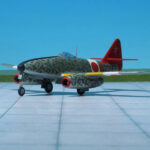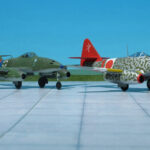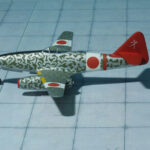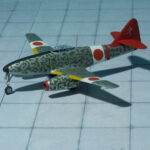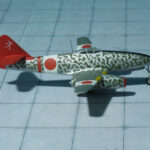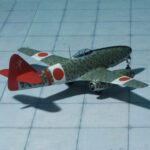TYPE: Turbojet fighter- attacker, Project
ACCOMMODATION: Pilot only
POWER PLANT: Two Nakajima Ne-230 turbojet engines, rated at 885 kp thrust each
PERFORMANCE: 505 mph
COMMENT: The Nakajima Ki-201 Karyū (“Fire Dragon”) was a Japanese turbojet fighter-attacker project designed during the final stages of World War II but which was never completed.
The Nakajima Kikka had been inspired by the successful German Messerschmitt Me 262, but the similarities to that aircraft were limited to the general configuration. On the other hand, the design team led by Iwao Shibuya based the Karyū far more closely on the German aircraft, which had already proven itself quite formidable.
The Ki-201 project was ordered by the Imperial Japanese Army between October and December 1944, with the Army laying out a performance requirement of an 800~1,000 km/h top speed, 12,000 meter practical ceiling, and 800~1,000 km range. The design was advanced by Nakajima during 1945 and the basic drawings were completed in June.
Nakajima anticipated the completion of the first Karyū by December 1945, and the first 18 units by March 1946. Most sources agree that work on the first prototype had not yet begun by the time of the Japanese surrender due to the fact that the Japanese Army had selected the Rikugun Ki 202 Shūsui-Kai (“Autumn Water, improved”) for priority development (Ref.: 24).
For comparison the German Messerschmitt Me 262A-2 Schwalbe (Swallow) armed with R-4-M Orkan, Stab JG 7 is shown.



